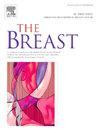The ideal strategies of antibody‒drug conjugate sequential treatment in HER2-expressing metastatic breast cancer: A multi-center real-world study
IF 5.7
2区 医学
Q1 OBSTETRICS & GYNECOLOGY
引用次数: 0
Abstract
Background
A growing number of antibody‒drug conjugates (ADCs) have been approved for breast cancer treatment. However, the proper sequential strategies of ADCs remain uncertain. Our study aimed to explore the ideal ADC sequential treatment strategies in human epidermal growth factor receptor 2 (HER2)-expressing metastatic breast cancer (MBC).
Methods
Our multi-centre retrospective study enrolled MBC patients who received at least 2 lines of different types of ADCs between Jan 1, 2018, and Jul 1, 2024. The efficacy of both ADC1 and ADC2 was evaluated.
Results
A total of 111 patients (83 HER2-positive and 28 HER2-low) were included. In HER2-positive populations, Patients who received ADC2 with a different payload from ADC1 exhibited significantly longer progression-free survival 2 (PFS2) (6.8 vs. 2.7 months, p < 0.001) and overall PFS (progression-free Interval 1 (PFI1) + PFS2) (15.0 vs. 8.5 months, p = 0.043) compared to those treated with ADC2 containing a similar payload with ADC1. Patients received ADC2 immediately after ADC1 progression showed longer PFS2 ADC2 delayed sequential patients (median PFS2: 6.0 vs. 3.0 months, p = 0.004). In HER2-low patients, the efficacy of ADC2 tended to be lower than ADC1 (median PFI1 vs. PFS2: 3.1 vs. 2.4 months, p = 0.078). No significant differences of efficacy were observed, no matter what ADC sequential treatment strategy used.
Conclusions
Sequential treatment with ADCs showed clinical benefit especially for HER2-positive patients treated with ADC2 which have different types of payloads from ADC1. In HER2-low patients, the benefit of ADC sequential therapy seemed to be limited.
表达her2的转移性乳腺癌的理想抗体-药物结合序贯治疗策略:一项多中心现实世界研究
越来越多的抗体-药物偶联物(adc)被批准用于乳腺癌治疗。然而,adc的正确顺序策略仍然不确定。本研究旨在探讨表达人表皮生长因子受体2 (HER2)的转移性乳腺癌(MBC)理想的ADC序贯治疗策略。方法一项多中心回顾性研究纳入了2018年1月1日至2024年7月1日期间接受至少2种不同类型adc治疗的MBC患者。评估ADC1和ADC2的疗效。结果共纳入111例患者,其中her2阳性83例,her2低阳性28例。在her2阳性人群中,接受ADC2和ADC1载荷不同的患者表现出更长的无进展生存期(PFS2)(6.8个月对2.7个月,p <;0.001)和总体PFS(无进展间期1 (PFI1) + PFS2)(15.0个月vs. 8.5个月,p = 0.043)。ADC1进展后立即接受ADC2治疗的患者显示出更长的PFS2(中位PFS2: 6.0个月vs. 3.0个月,p = 0.004)。在her2低的患者中,ADC2的疗效往往低于ADC1(中位PFI1 vs PFS2: 3.1 vs 2.4个月,p = 0.078)。无论采用何种ADC序贯治疗策略,疗效均无显著差异。结论ADCs序贯治疗具有明显的临床获益,特别是对于her2阳性的ADC2患者,其有效载荷类型与ADC1不同。在her2低患者中,ADC序贯治疗的益处似乎有限。
本文章由计算机程序翻译,如有差异,请以英文原文为准。
求助全文
约1分钟内获得全文
求助全文
来源期刊

Breast
医学-妇产科学
CiteScore
8.70
自引率
2.60%
发文量
165
审稿时长
59 days
期刊介绍:
The Breast is an international, multidisciplinary journal for researchers and clinicians, which focuses on translational and clinical research for the advancement of breast cancer prevention, diagnosis and treatment of all stages.
 求助内容:
求助内容: 应助结果提醒方式:
应助结果提醒方式:


